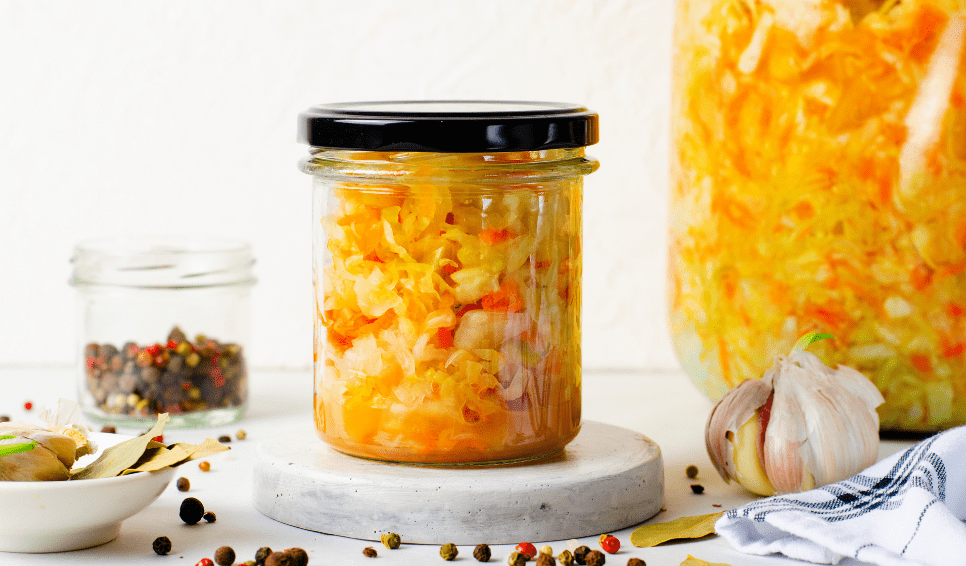
Microbiome 101: Probiotics vs. Prebiotics
The difference between good bacteria and bad bacteria and what you need for optimal gut health.
Probiotics vs prebiotics? It’s all about maintaining a healthy gut. Your gut flora or microbiome—the trillions of bacteria that live in your large intestine—are responsible for how the body functions, metabolizes food, and how it reaches and maintains set weight.
We are talking about hundreds of different types of bacteria, some better for you than others, whose presence and balance is important for overall health and wellbeing.
You’ve probably heard a lot about probiotics and prebiotics and how they can help support a healthy microbiome. But what’s the difference? And what do you need to maintain “good” bacteria and a healthy gut?
Here’s the microbiome 101 breakdown:
Prebiotics fuel good bacteria, allowing them to multiply and thrive. Probiotics add beneficial bacteria to your gut. The two work hand in hand and need each other to create a balanced gut microbiome.
Ideally, your diet should include both prebiotic and probiotic-rich foods to maximize gut health.
A Quick Comparison
| Probiotics | Prebiotics |
| Live beneficial bacteria | Non-digestible fiber |
| Found in fermented foods | Found in plant-based foods |
| Help populate gut with good bacteria | Feed the good bacteria |
| Examples: Yogurt, Kefir, Kimchi | Examples: Garlic, Bananas, Asparagus |
Probiotics
Probiotics are live microorganisms (bacteria or yeast) that are beneficial for your gut. They help increase the number of “good” bacteria in the microbiome and can promote a healthy balance between beneficial and harmful bacteria.
Probiotic Foods
These foods naturally contain live probiotics, which introduce beneficial microbes directly into the digestive system. Try to incorporate these into your weekly diet.
- Yogurt (with live and active cultures)
- Kefir (a fermented dairy drink)
- Kimchi (fermented vegetables, typically cabbage)
- Sauerkraut (fermented cabbage)
- Miso (fermented soybean paste)
- Kombucha (fermented tea)
- Pickles (fermented in brine, not vinegar)
- Tempeh (fermented soy product)
Probiotic Benefits
- Help with digestion and nutrient absorption
- Strengthen the immune system
- May reduce symptoms of irritable bowel syndrome (IBS) or diarrhea
- Can improve mental health by enhancing gut-brain communication
Prebiotics
Prebiotics are types of fiber and compounds that feed the beneficial bacteria already present in your gut. Think of them as the “food” for probiotics, helping these good bacteria grow and thrive.
Prebiotic Foods
Prebiotics are naturally found in certain foods, especially plant-based foods that are high in fiber.
- Garlic
- Onions
- Leeks
- Bananas (especially slightly green ones)
- Asparagus
- Chicory root
- Artichokes
- Apples (especially the skins)
- Oats
- Flaxseeds
Prebiotic Benefits:
- Feed and nourish your gut’s beneficial bacteria
- Help improve digestion and bowel regularity
- May improve immune function
- Can increase calcium absorption, which is good for bone health
Should You Have Both?
Yes! A healthy gut microbiome thrives on both. A combination of probiotics and prebiotics can help maintain a balanced and diverse gut microbiome, which has been linked to improved digestion, better immune function, and even better mood.
Tip: If you’re new to probiotics, start slowly and increase intake gradually. The same goes for prebiotics, as they can cause bloating or gas if introduced too quickly in large amounts.
If you’re thinking about incorporating these into your diet, you can start with simple steps like adding a serving of yogurt or kimchi to a meal and adding a banana or apples as a snack.
What to Avoid to Minimize Bad Gut Bacteria
- Sugary foods
- Artificial sweeteners
- Foods containing unhealthy processed fats
- Overuse of antibiotics
- Too much alcohol
- Smoking
- Lack of sleep
- Too much stress
Want to chat about your gut health? Reach out for a complimentary consultation with a holistic nutritionist.
